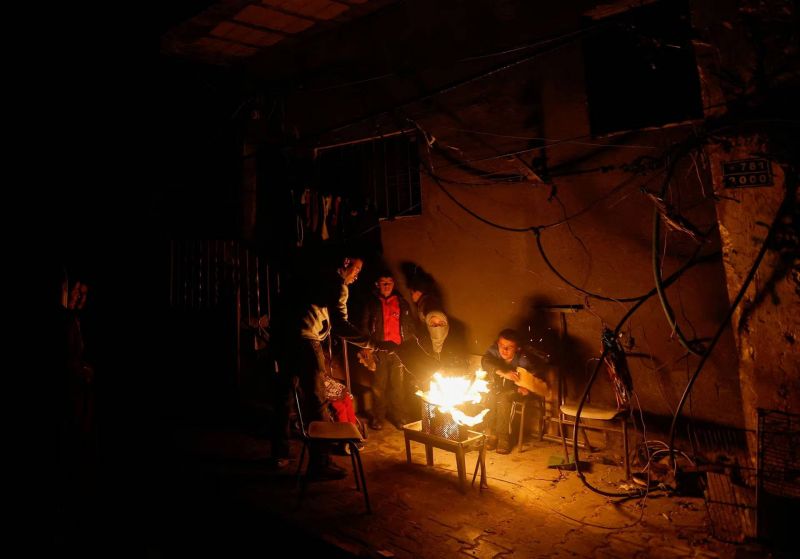
Palestinians sit next to a fire, amid a temporary truce between Hamas and Israel, in Khan Younis in the southern Gaza Strip. (Credit: Mohammed Salem/Reuters)
Here is a summary of events from day 53 of the Hamas-Israel war and day five of the Hamas-Israel truce.
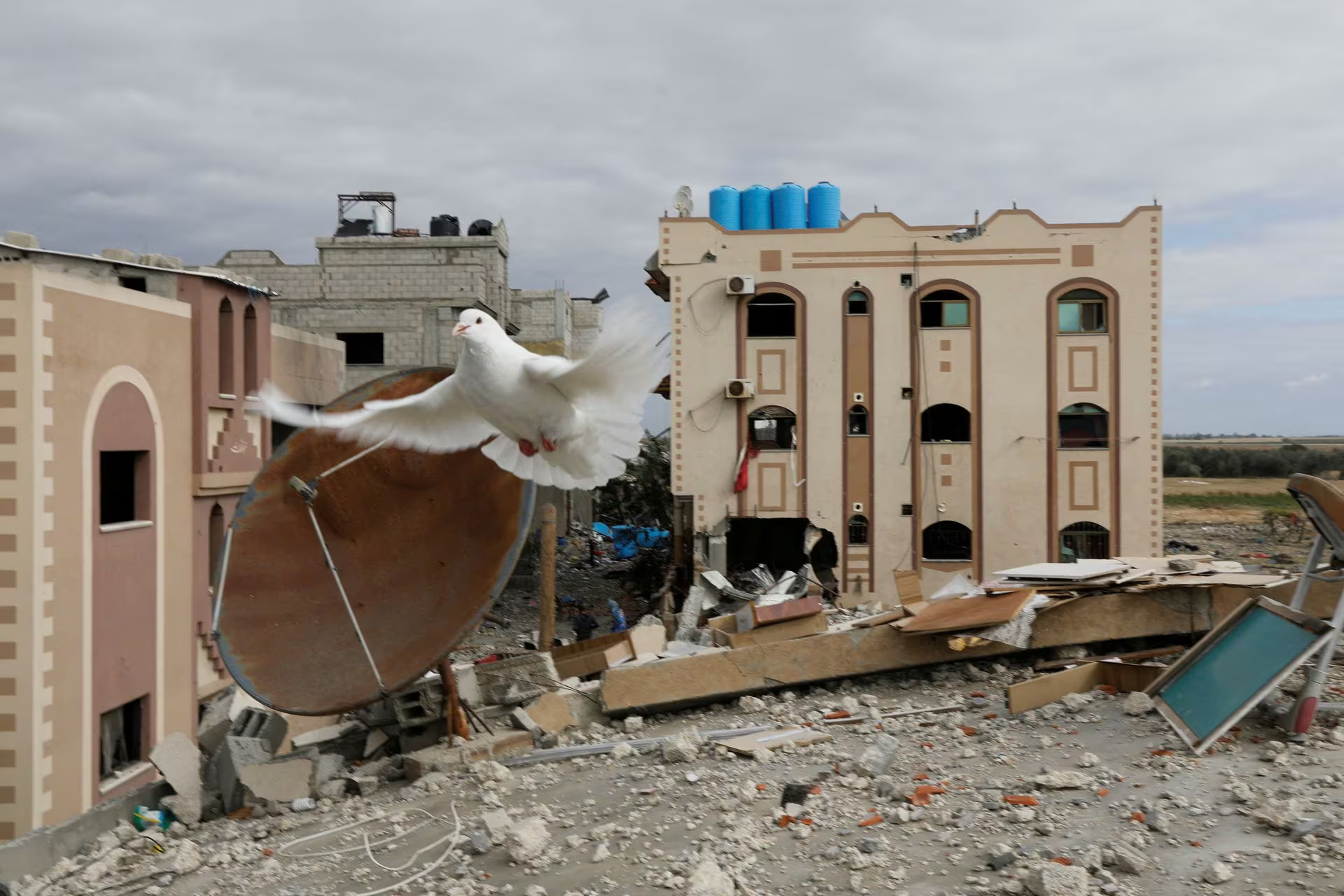 A dove flies over the remains of a house destroyed by Israeli strikes during the war, amid a temporary truce between Israel and Hamas, in Khan Younis in the southern Gaza Strip. (Credit: Saleh Salem/Reuters)
A dove flies over the remains of a house destroyed by Israeli strikes during the war, amid a temporary truce between Israel and Hamas, in Khan Younis in the southern Gaza Strip. (Credit: Saleh Salem/Reuters)
Moments of violence
In northern Gaza, three explosives went off near where Israeli troops are stationed in the part of the Strip they now occupy, injuring several of them. This was followed by an exchange of gunfire between the troops and their attackers. Both sides accused each other of breaching the parameters of the truce. Hamas called it a “field clash” in which fighters “dealt with this breach.” Israel maintained they were positioned in accordance with the agreement. Regardless, the fighting was contained to this incident. The rest of the day, into the evening exchange of hostages, unfolded without any further reports of a clash.
In southern Lebanon, in the border village of Aita al-Shaab, a loud explosion was heard. Some residents feared the bombardment had started again, but no evidence of a strike was found.
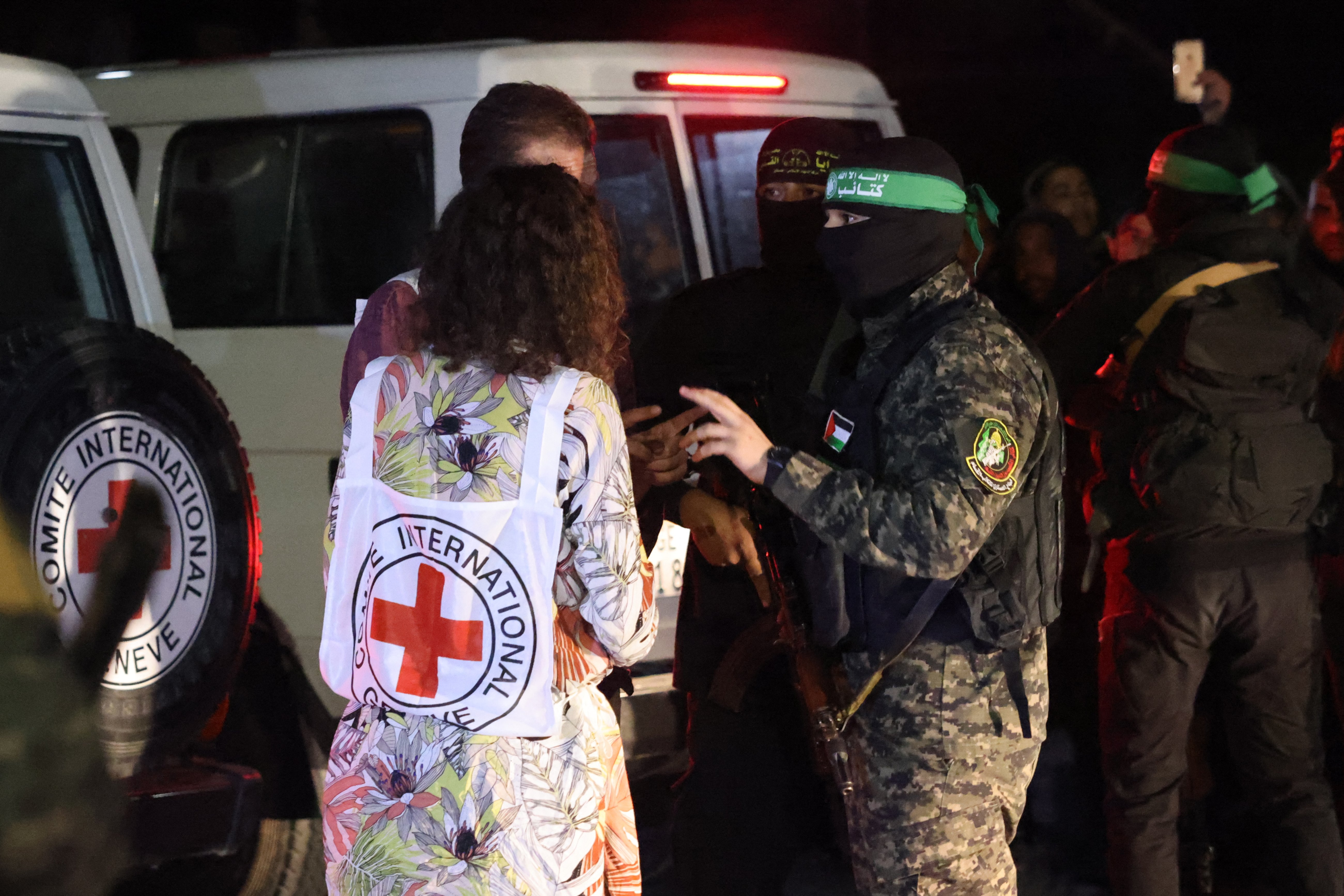 Hamas and Islamic Jihad fighters speak with members of the Red Cross during the release of hostages in Rafah, in the southern Gaza Strip on Nov. 28, 2023. (Credit: Said Khatib/AFP)
Hamas and Islamic Jihad fighters speak with members of the Red Cross during the release of hostages in Rafah, in the southern Gaza Strip on Nov. 28, 2023. (Credit: Said Khatib/AFP)
The fifth exchange
This evening, Hamas released 12 hostages – 10 are Israeli citizens, two are foreigners, nine are women, and one is a child. Hamas confirmed receiving a list of thirty Palestinians to be freed from Israeli detention – 15 of which are women and 15 are children. As of the publication of this article, the 12 hostages are on route to Israel and the 30 Palestinians are arriving in Ramallah and Jerusalem.
You can read more about why prisoners are a key issue for Palestinians here.
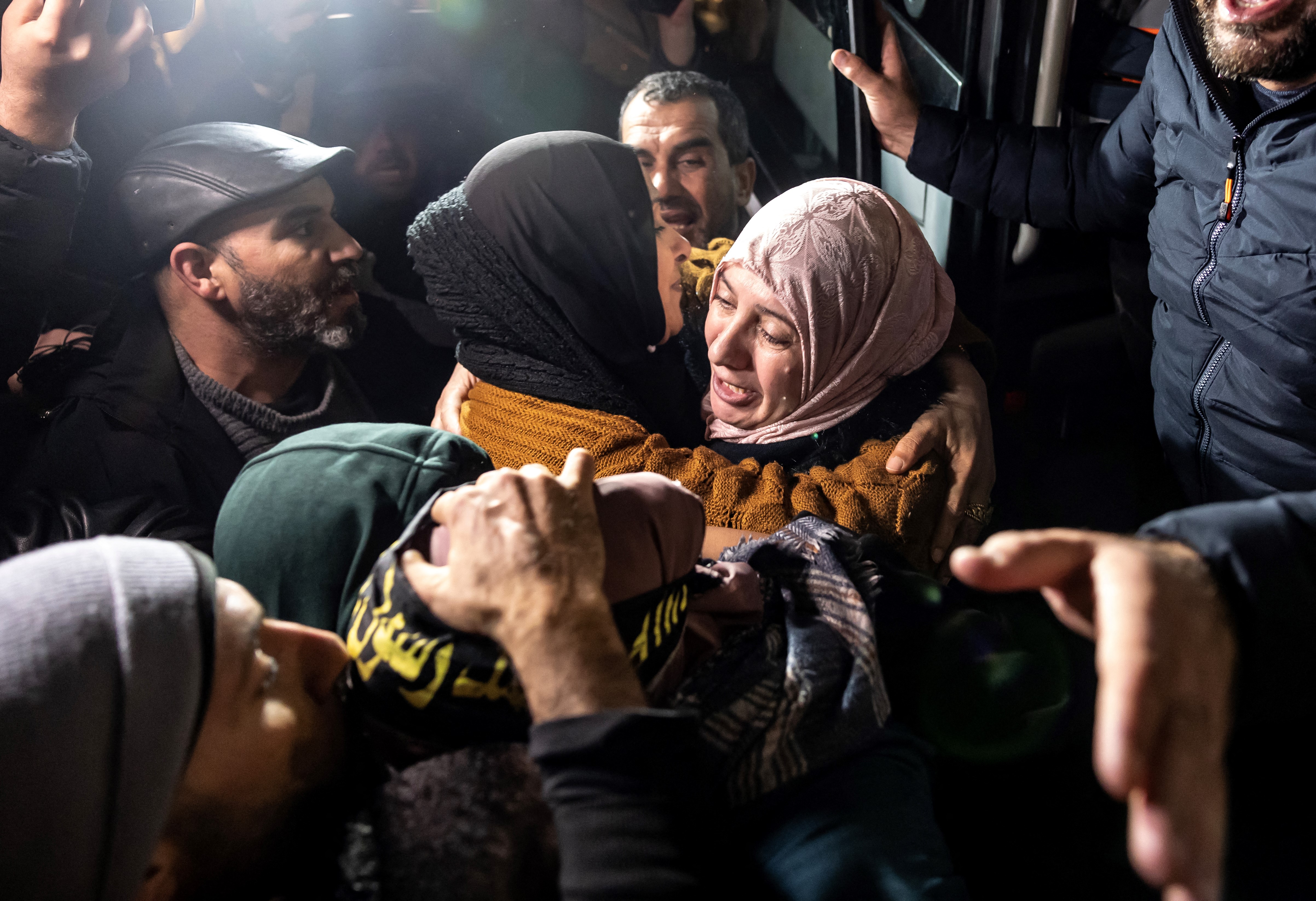 A Palestinian female prisoner hugs a relative among supporters and relatives, after being released from an Israeli jail in exchange for hostages released by Hamas from the Gaza Strip, in the occupied West Bank on Nov. 28, 2023. (Credit: Fadel Senna/AFP)
A Palestinian female prisoner hugs a relative among supporters and relatives, after being released from an Israeli jail in exchange for hostages released by Hamas from the Gaza Strip, in the occupied West Bank on Nov. 28, 2023. (Credit: Fadel Senna/AFP)
Reports from the enclave
In the midst of this temporary cease-fire and its recent extension, several doctors and healthcare workers are entering the enclave along with humanitarian aid, medical supplies, and even fuel – some of which was able to make its way into the northern part of the Strip through an Israeli checkpoint.
Those newly immersed in Gaza’s reeling healthcare system and dire living conditions took to social media to share their observations. Today, Doctors Without Borders released a video, the second of its kind, of their colleague Dr. Hafez Abukhussa, who is working at a hospital in Khan Younis. In it, Abukhussa says the injuries he is seeing are more severe than he’s ever witnessed in previous wars.
“Can you imagine receiving 100 to 200 patients a day, sometimes 500?” he says. In spite of the increase in aid, hospitals are still struggling with a serious lack of supplies – a condition several humanitarian organizations warned of, saying that aid going into the Strip is too little, too late.
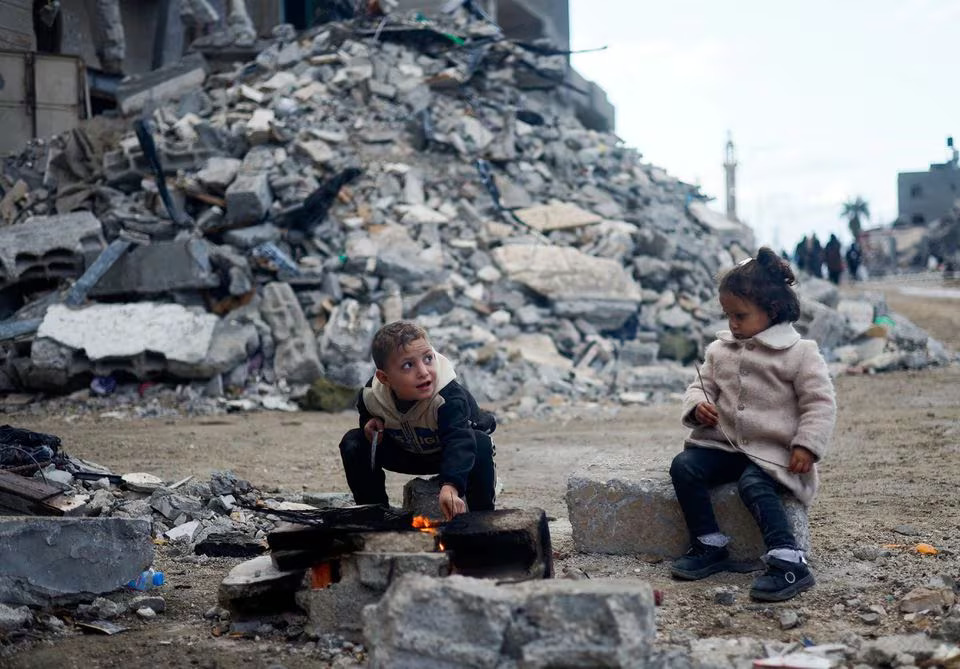 Palestinian children sit by the fire next to the rubble of a house hit in an Israeli strike during the war, amid a temporary truce between Hamas and Israel, in Khan Younis in the southern Gaza Strip Nov. 27, 2023. (Credit: Mohammed Salem/Reuters)
Palestinian children sit by the fire next to the rubble of a house hit in an Israeli strike during the war, amid a temporary truce between Hamas and Israel, in Khan Younis in the southern Gaza Strip Nov. 27, 2023. (Credit: Mohammed Salem/Reuters)
Looming disease
At a UN briefing in Geneva today, Margaret Harris, of the World Health Organization, delivered a grave warning. “Eventually we will see more people dying from disease than we are seeing from the bombardment, if we are not able to put back [together] this health system,” she said. She spoke about a rise in infectious diseases, particularly diarrhea. By early November, cases had already surged to more than 100 times the normal level among those aged five and older.